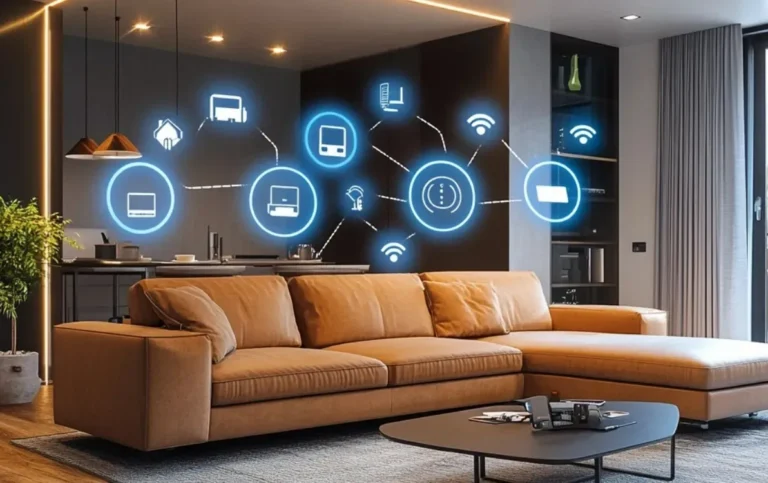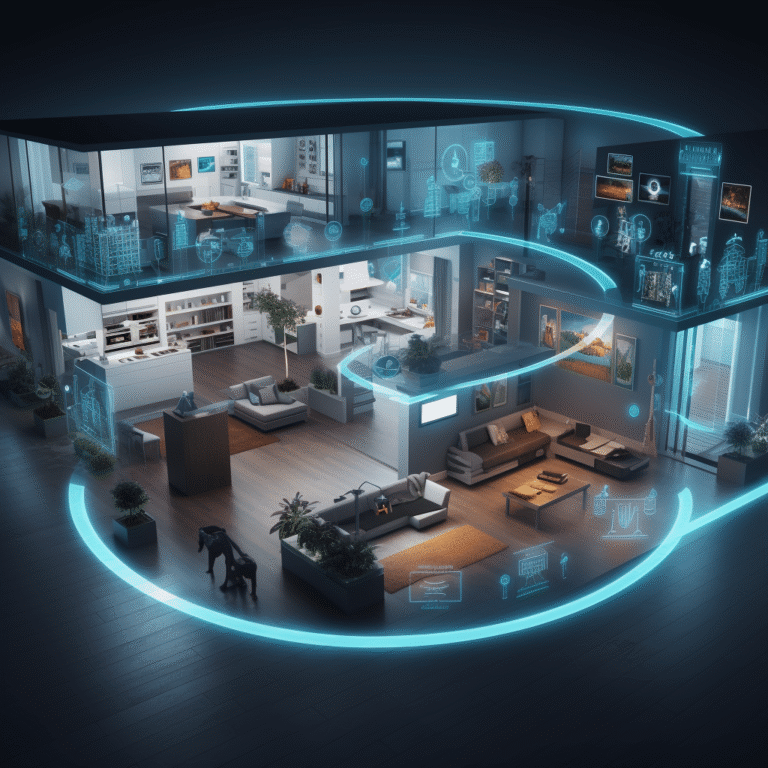Smart Connectivity The Future of Seamless Integration
Introduction to Smart Connectivity
In the rapidly evolving digital age, the concept of “smart connectivity” has emerged as a cornerstone of modern technology. Smart connectivity refers to the seamless integration of devices, systems, and networks that communicate intelligently to enhance efficiency, convenience, and innovation. From smart homes to connected cities, this paradigm is reshaping how we interact with technology and the world around us. But what exactly is smart connectivity, and why is it so critical in 2025?
At its core, smart connectivity is about creating ecosystems where devices not only communicate but also make decisions based on real-time data. This interconnectedness relies on advanced technologies such as the Internet of Things (IoT), 5G networks, artificial intelligence (AI), and edge computing. Together, these technologies enable a world where devices work in harmony, anticipate user needs, and optimize processes without human intervention.
This article explores the fundamentals of smart connectivity, its key technologies, applications, challenges, and its transformative impact on society. By the end, you’ll understand why smart connectivity is not just a buzzword but a revolution that’s shaping the future.
The Building Blocks of Smart Connectivity
Smart connectivity is powered by a combination of cutting-edge technologies that work together to create intelligent, responsive systems. Below are the primary components driving this transformation:
1. Internet of Things (IoT)
The IoT is the backbone of smart connectivity. It refers to the network of physical devices—ranging from household appliances to industrial machinery—embedded with sensors, software, and connectivity features. These devices collect and share data, enabling them to interact with each other and centralized systems. For example, a smart thermostat adjusts the room temperature based on weather forecasts and user preferences, all while communicating with a smartphone app.
In 2025, IoT devices are ubiquitous, with billions of connected devices worldwide. From wearables that monitor health metrics to smart agriculture systems that optimize crop yields, IoT is the foundation of smart connectivity.
2. 5G and Beyond
The rollout of 5G networks has been a game-changer for smart connectivity. Unlike previous generations, 5G offers ultra-low latency, high bandwidth, and the ability to connect millions of devices simultaneously. This makes it ideal for applications requiring real-time data transfer, such as autonomous vehicles and remote surgeries.
Looking ahead, research into 6G is already underway, promising even faster speeds and more reliable connections. These advancements will further enhance the capabilities of smart connectivity, enabling more complex and data-intensive applications.
3. Artificial Intelligence (AI)
AI is the brain behind smart connectivity. By analyzing vast amounts of data generated by connected devices, AI algorithms can identify patterns, make predictions, and automate decision-making. For instance, AI-powered traffic management systems can optimize traffic flow in real-time by analyzing data from cameras, sensors, and GPS devices.
In 2025, AI is deeply integrated into smart connectivity ecosystems, enabling devices to learn from user behavior and adapt to changing conditions. This intelligence is what makes smart connectivity truly “smart.”
4. Edge Computing
Edge computing brings data processing closer to the source, reducing latency and improving efficiency. Instead of sending all data to a centralized cloud server, edge devices process information locally. This is critical for applications like autonomous drones or smart factories, where split-second decisions are essential.
By combining edge computing with IoT and AI, smart connectivity systems can operate faster and more reliably, even in areas with limited network coverage.
Applications of Smart Connectivity
The impact of smart connectivity spans across industries, transforming how we live, work, and interact. Here are some key applications:
Smart Homes
Smart homes are perhaps the most familiar application of smart connectivity. Devices like smart speakers, lights, and security systems communicate with each other to create a cohesive living experience. For example, a smart home hub can coordinate lighting, heating, and entertainment systems based on a user’s daily routine.
In 2025, smart homes are more intuitive, with AI assistants anticipating needs before users even articulate them. Imagine a home that adjusts the lighting and plays your favorite music as soon as you walk in, all without lifting a finger.
Smart Cities
Smart connectivity is revolutionizing urban planning through the development of smart cities. These cities leverage IoT sensors, AI, and 5G to optimize everything from traffic flow to waste management. For instance, smart traffic lights can reduce congestion by adapting to real-time traffic conditions, while connected waste bins alert authorities when they need emptying.
Smart cities also enhance public safety. Connected surveillance systems can detect unusual activity and alert law enforcement instantly, improving response times and reducing crime rates.
Healthcare
In healthcare, smart connectivity is saving lives. Wearable devices monitor vital signs in real-time, alerting doctors to potential issues before they become critical. Telemedicine platforms, powered by 5G, enable remote consultations with minimal lag, making healthcare more accessible.
Moreover, smart connectivity enables precision medicine. By analyzing data from connected devices, AI can recommend personalized treatment plans tailored to an individual’s genetic makeup and lifestyle.
Industry 4.0
The industrial sector is undergoing a transformation known as Industry 4.0, driven by smart connectivity. Smart factories use IoT sensors to monitor equipment health, predict maintenance needs, and optimize production lines. AI algorithms analyze data to reduce waste and improve efficiency, while 5G ensures seamless communication between machines.
This connectivity also enables remote monitoring and control, allowing factory managers to oversee operations from anywhere in the world.
Challenges of Smart Connectivity
While smart connectivity offers immense potential, it also comes with challenges that must be addressed to ensure its success.
1. Security and Privacy
With billions of connected devices, security is a top concern. Cyberattacks targeting IoT devices can compromise sensitive data or disrupt critical systems. For example, a hacked smart home device could give attackers access to personal information or even control over the home.
To mitigate these risks, robust encryption, secure authentication, and regular software updates are essential. Additionally, users must be educated about best practices, such as using strong passwords and avoiding unsecured networks.
2. Interoperability
For smart connectivity to work seamlessly, devices from different manufacturers must communicate effectively. However, the lack of universal standards can lead to compatibility issues. For instance, a smart light bulb from one brand may not work with a hub from another.
Industry-wide standards and protocols, such as Matter and Zigbee, are helping to address this issue, but widespread adoption is still a work in progress.
3. Infrastructure Costs
Deploying smart connectivity infrastructure, such as 5G networks and edge computing facilities, requires significant investment. Developing countries, in particular, may struggle to afford these upgrades, creating a digital divide.
Governments and private companies must collaborate to ensure equitable access to smart connectivity technologies, ensuring that no region is left behind.
4. Energy Consumption
Billions of connected devices consume substantial energy, raising concerns about sustainability. Smart connectivity systems must be designed to minimize power usage, incorporating energy-efficient hardware and software optimization techniques.
Innovations like low-power IoT protocols and renewable energy-powered data centers are steps in the right direction.
The Future of Smart Connectivity
As we look to the future, smart connectivity is poised to become even more integral to our lives. Emerging technologies like quantum computing and advanced AI will further enhance the capabilities of connected systems. For example, quantum communication could enable ultra-secure networks, while next-generation AI could make devices even more autonomous.
Moreover, the integration of augmented reality (AR) and virtual reality (VR) with smart connectivity will create immersive experiences. Imagine a smart city where AR glasses provide real-time navigation and information about your surroundings, all powered by a seamless 5G network.
However, the success of smart connectivity depends on addressing its challenges. Collaboration between governments, businesses, and consumers is crucial to ensure security, interoperability, and accessibility. By working together, we can unlock the full potential of smart connectivity and build a future where technology enhances every aspect of life.
Conclusion
Smart connectivity is more than just a technological trend; it’s a transformative force that’s reshaping our world. From smart homes to connected cities, its applications are vast and varied, offering unprecedented levels of efficiency, convenience, and innovation. However, realizing its full potential requires overcoming significant challenges, including security, interoperability, and infrastructure costs.
In 2025, we stand at the cusp of a new era driven by smart connectivity. As technologies like IoT, 5G, AI, and edge computing continue to evolve, they will pave the way for a more connected, intelligent, and sustainable future. By embracing these advancements and addressing their challenges, we can create a world where technology works seamlessly to improve our lives.
Whether you’re a homeowner looking to automate your living space or a city planner designing the urban landscape of tomorrow, smart connectivity offers endless possibilities. The question is not whether smart connectivity will shape the future, but how we will harness its power to create a better world.






